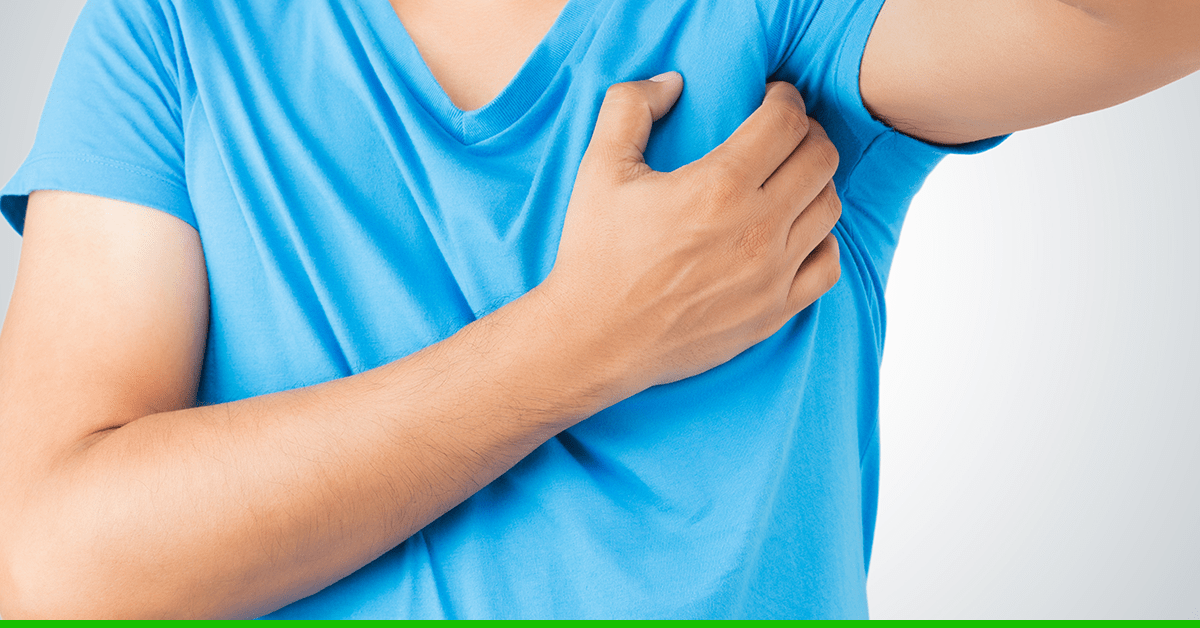
Have you ever experienced a painful, red rash on your armpits or belly folds during summertime? Did the pain get worse upon sweating, and you had no idea how to treat it? What you had was intertrigo, and once you familiarize yourself with the treatments for intertrigo, you will never have to experience that horrible sensation again.
Intertrigo is an inflammatory rash caused by friction that occurs wherever there are folds of skin or patches of skin in close contact with each other. As folds of skin rub against one another, there is an immune reaction (inflammation) within the body that manifests as a red, bumpy rash.
Intertrigo worsens with moisture, as that causes the skin folds to further stick to one another, thereby increasing friction, damage, and inflammation. The moisture is mostly because of sweating in a hot and humid environment or summertime, but it can also be due to urine or feces in an infant, toddler, or incontinent individual. Other factors that aggravate it include heat and lack of air circulation.

Intertrigo can come and go at any time, sometimes without any intertrigo treatments, and can affect anyone. Since sweating is pronounced in obese people (who also have higher skin folds) and those with sweating disorders, they are more vulnerable to intertrigo. Similarly, people with artificial legs, splints, and braces, as well as diabetes, incontinence (uncontrolled urination), or a weakened immune system are at a higher risk.
Babies can also get intertrigo and are, in fact, more susceptible due to moist skin as a cause of excessive drooling and diaper leakage. They also have chubby skin, short necks, and a flexed posture, causing intertrigo. In babies, it presents as a diaper rash, which requires prompt intertrigo treatment.
It is a common misconception that it is an infection, which is why people use antibiotics or antifungals as intertrigo treatments. However, since intertrigo is not an infection but an inflammatory condition, these are ineffective. However, the damaged skin, moisture, and warmth (heat provided by friction) create an ideal environment for an outgrowth of bacteria, yeast, or other fungi, resulting in a secondary infection.
While intertrigo is not contagious from one part of the body to another or between people, the infection that may begin at the affected area could spread. The microorganism, having triggered a secondary immune reaction, will make the rash worse.
Before thinking about treatments for intertrigo, it is important to know when a rash is intertrigo and when it is something else – an identification mostly made by a dermatologist. An intertrigo rash without infection is characterized by:
Further progression, without treatment, can cause the skin to become raw, crusty, and scaly that cracks easily, and may start bleeding. If the area becomes infected with bacteria, yeast, or fungus, it will start emanating a foul smell. Moreover, the rash will become asymmetrical, expand, and exhibit pus-filled, tender bumps.
All these symptoms aggravate upon contact with water and bodily secretions such as sweat, urine, and feces.
The intertrigo treatment for an affected area is to keep it dry, clean, and cool. You need to shower every day (especially after excessive sweating or physical activity) and properly dry yourself with a clean towel by gently tapping it on your skin, rather than rubbing it forcefully. Additionally, the affected area should be cooled with a fan or a hairdryer (on the ‘cool’ setting) several times a day.
On top of these behavioral changes, clothing, and the products you apply to the affected area are equally, if not more, important in intertrigo treatment.
What you wear is an essential component of treating intertrigo because the entire goal is to expose the affected area and other areas with skin folds, to air. This can be accomplished by avoiding tight clothing and opting instead for loose, baggy clothes made of breathable fabrics like cotton. Do not go for synthetic fibers like nylon.
If the area below or beneath breasts is affected, wearing bras with effective padding and support is a vital treatment for intertrigo. Similarly, if the area between your toes is the problem, wear open-toed shoes. Babies should wear loose and absorbent diapers if they have intertrigo below their buttocks or on their thighs so that the diaper does not leak moisture onto the affected area.
Fiber skin barriers such as cotton or clean gauze can also be placed to separate affected areas of skin.
Skin barrier creams or anti-chafing gels with high zinc oxide or petrolatum content are potent intertrigo treatments as they stop folds of skin from rubbing against one another.
To prevent aggravation due to moisture, apply a mild antiperspirant under your breasts or in armpits. That should be coupled with deodorant or petroleum jelly, especially before physical activity. For the same purpose of blocking sweat, powder drying agents such as talcum powder can also be used.
To ease the symptoms, tea tree oil or coconut oil works wonders for itching, while topical steroid creams such as hydrocortisone help with inflammation. The latter should be recommended by a healthcare professional.
If the rash has given way to an infection, the treatment for intertrigo should also target the causative microorganism. Going to a primary care physician, in this case, should be your priority who, depending upon the nature of the pathogen, will recommend you a topical antifungal or antibacterial cream. If the bacterial infection is severe, he may opt for oral antibiotics such as penicillin.
While knowing intertrigo treatments is vital; prevention is always better than cure. Tips to preemptively save yourself from intertrigo include:
If you have any symptoms of intertrigo, it is strongly advised that you see a primary care physician who can find out what kind of bacteria or fungi have caused it and offer you appropriate treatment.
See Also: What Do Allergy Specialists Say About Seasonal Shots?